Physiological hoof preparation – or the fairy tale of the “Level Touchtown of the Hoof”
To enable horses to move physiologically, I don’t think it’s enough just to treat them osteopathically without comment. Hoof and riding style are always part of my treatment and are also controlled. I do not do this to discredit the farrier or riding instructor. But because I am aware that movement only works as a whole and that I alone, even through a regular osteopathic treatment can only bring short-term success.
To be honest, how much do the individual “disruptive factors” change in physiological movement? Then I would say
85 % of the riders and their riding style
7 % of the shoeing
5 % of the saddle
3 % Accidents (while riding or on the paddock)
That’s why I think it’s important to talk about the correct shoeing and especially about correct hoof processing. Even if the rider is the biggest influencing factor, a horse stands on its hooves for 24 hours and the shoe should already fit. A horse should be able to stand comfortably and undisturbed.
Hoof forms, malformations of legs and hooves and their effects on horse health
If you want to know something about the different hoof shapes and leg and toe malpositions and their strain on the musculoskeletal system, you can google it or read the textbooks of the FN. Yes, of course misalignments cause additional strain on the associated joint structures. But you will always find x-rays that show the effects of congenital malpositions on the joints of horses.
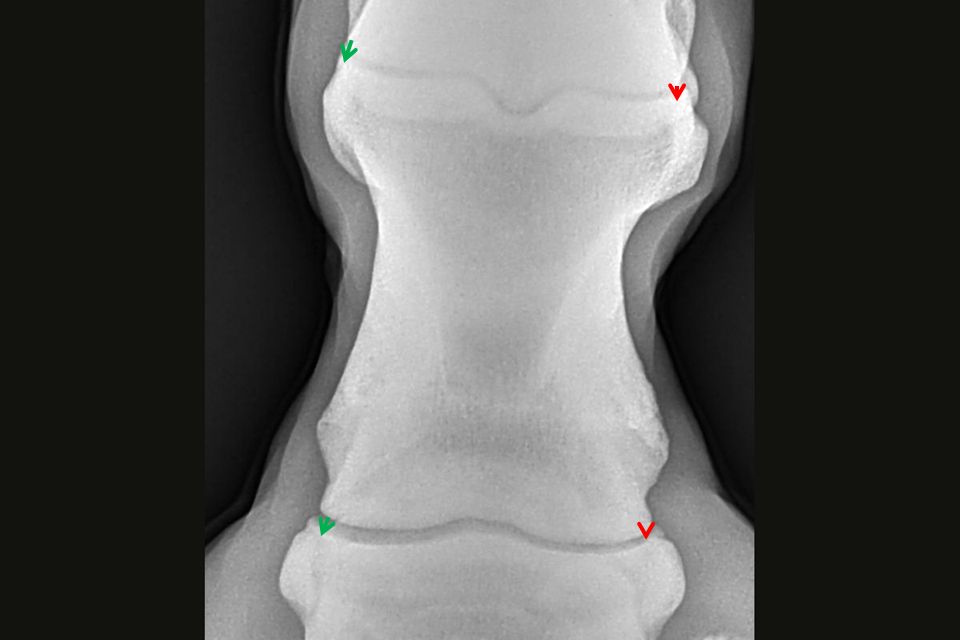
These x-rays do not show any congenital deformities, but the consequences of a defective hoof preparation. In the case of congenital malpositions, the distances between the joint surfaces are the same laterally and medially. Even though the hoof is optically misaligned when viewed from the outside. That means that the pressure of the joint surfaces on each other is the same at all points of the joint. And the lateral and medial collateral ligaments do not receive different tension strengths and loads during movement.
In horses with congenital malpositions, the side walls and heels of the hoof can and must be left unequal so that the pressure conditions on the joints are balanced, too.
And I can tell that from the x-ray.
This is due to the fact that even in horses with congenital malpositions, the joint gaps on the inside and outside of the leg are the same width. Despite malpositioning.
And everything else, such as the differences in distance on the upper X-ray image, are errors in the hoof preparation!!
Otherwise, you should always make sure that the length of the heel on the inner (medial) and outer (lateral) surfaces is the same. Note that the same length and not the same height is a difference.
This is what I call level footing. What I don’t understand by this is that the heel of the foot and the toe are both touching down at the same time during landing.
The “Rolling Behaviour” of hooves
So the question is: Do hooves roll off and can I call it “rolling off”, my horse is already standing on the tip of his toes anyway?
To the first point: I have watched all the videos I found on youtube on the subject of feet and feet on horses. Seen from the side and from the front. That horses have to roll over the toe should be clear to everyone.
But how do they come up? Level? Just not. They actually come up with the heel first and then roll forward and over the toe. And to point two, yes you even have to call it “rolling”, what else is it?
Here are some nice high speed videos.
The first one shows touchdown and rolling behaviour of a horse’s hoof undshod.
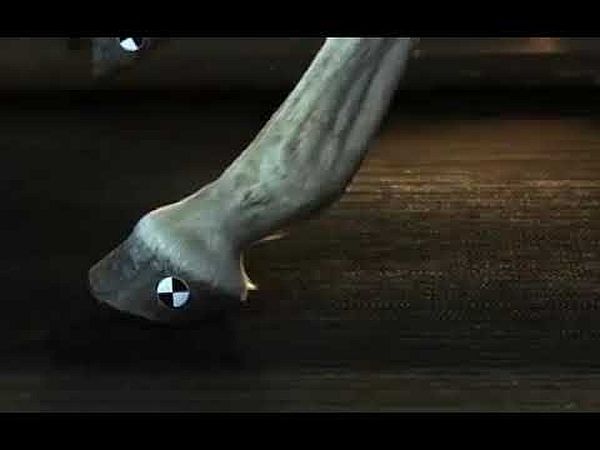
https://youtu.be/vj09UtRIwHI
The second video shows the same horse shod. Here you can see the much more abrupt touch down of the toe and the worse rolling behaviour. So the horse puts the crus of the horseshoe down and then plops onto the flat surface of the shoe.
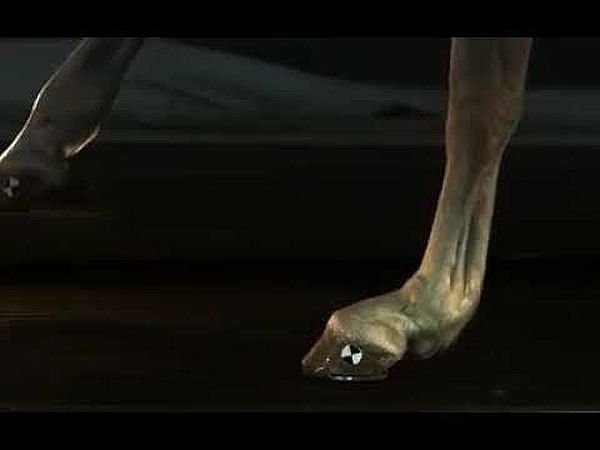
The videos are courtesy of Eylon Joseph. You can also find them on my Facebook page and on Eylon’s page, too.
If this is not enough I recommend youtube https://www.youtube.com/watch?v=gQI-C0B6hPw, https://www.youtube.com/watch?v=vWqSVZnY9Uw.
The anatomical explanation for “Rolling Touchdown”
If one looks at the anatomy of the toe joints, the position of the collateral ligaments of the hoof, pastern and fetlock joints and the resulting stability, then it also becomes clear why a healthy horse touches down with heel first. The horse needs maximum stability in its toe joints at the moment of the footing. If the toe joints of the foot lack this stability, the strained capsule tries to stabilize itself by storing bone substance. Over time, a pastern or hoof joint would develop a high or low ringbone, a typical sign of instability in the toe joints.
But when do the toe joints have their maximum stability? This can be explained by the attachment of the collateral ligaments and the functioning of the toe joints. They are designed in such a way that they have the greatest resistance in the zero position of the toe joints. Then those ligaments are inhibiting their flexion. Because of their function collateral ligaments functionally belong to the fetlock syspensory apparatus and relieve the interosseus muscle and the other suspensory apparatus at the moment of touchdown.
What is the “Zero Position” and how does the moment of the hoof touchdown look like?
For this purpose I have here an x-ray image which shows the moment of the touchdown. As you can see with the heel first.
A joint in “zero Position” means, that all ligaments (left side to right side, dorsal and palmar) have the same force of tension. And the joint itself sits in a middle position. So the center point of the proximal joint partner sits opposite the center point of the distal joint partner.
In addition, the lateral joint ligaments are perpendicular to the ground at the moment of foot contact in order to optimally stabilize the joints in this position.
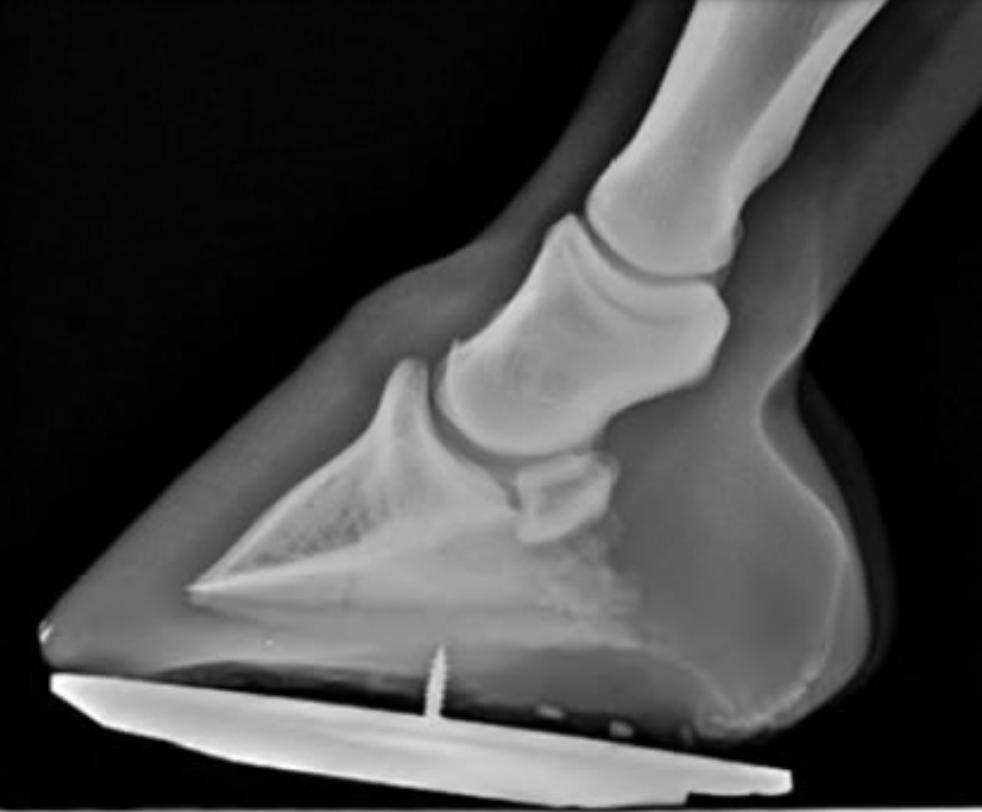
Physiological footing of the horse with heel first. Maybe you noticed that this is a shod horse. In this case, however, it is a special shoe design to Stefan Wehrli (WTS Shoe). This shoe makes it possible to roll the hoof over the walls of the hoof in all directions. (Only suitable if there are no functional and structural changes in the toe joints and their ligamentous apparatus). The image is courtesy of Stefan Wehrli, WTS, Switzerland.
Additionally I have drawn you a green line in there, which marks the zero position of the hoof and pastern joint. If a horse were to have a level footing, it would already come up with a bent hoof and pastern joint, the effect of the collateral ligaments would be weakened and the joint would be unstable.
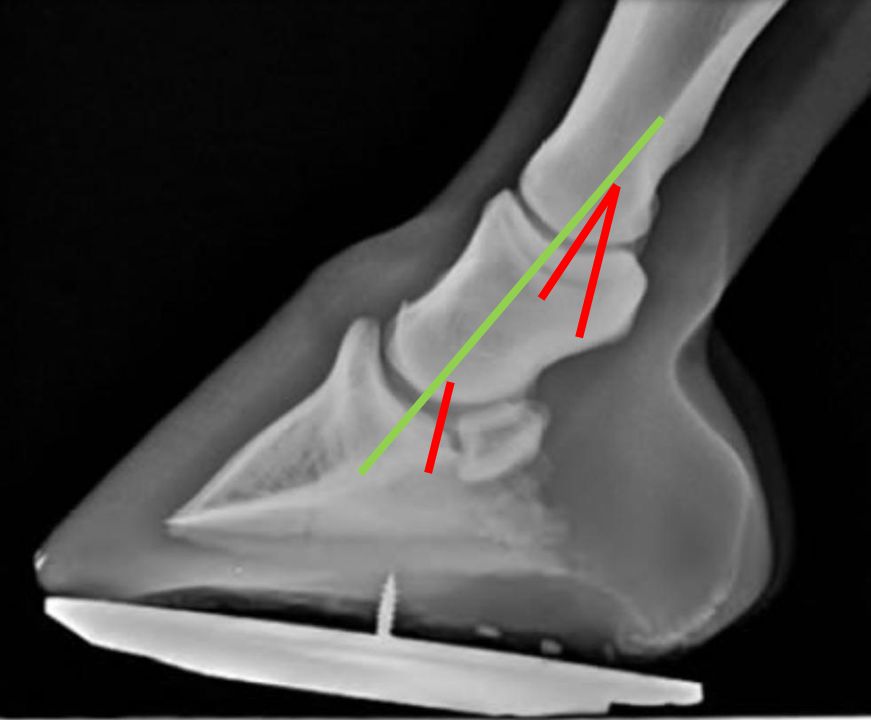
At least: horses that have real level footing suffer from a hypertonus in the flexors of the toe joints. As a result these horses are predestined for injuries to the ligamentous and suspensory apparatus and either high or low ringbone or both. And a correct hoof preparation, will always promote the physiological rolling behaviour of the horse’s hoof. And only if I, as an osteotherapist, take all this into account does osteotherapy also make sense for me.